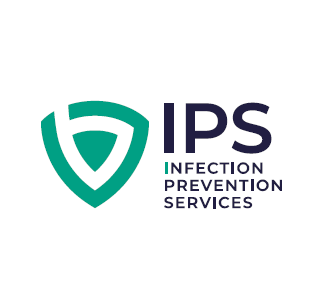Sep 9
Aged Care Training
Online Flexibility and In-person Connection
The aged care sector is constantly changing, with new technologies, practices, and regulatory requirements emerging regularly. This makes ongoing professional development (CPD) essential rather than optional. As a member of an Infection Prevention team, you know your role is crucial in safeguarding residents and ensuring high-quality care, which makes effective training essential. Investing in thorough training programs not only enhances residents' health outcomes but also boosts staff morale, job satisfaction, and professional growth—key factors in retaining staff. The key question then is: how do we best prepare our teams with the skills and knowledge needed to prevent infections effectively? This involves carefully evaluating the strengths and limitations of both online and face-to-face learning options.

Online Learning: Broadening Reach and Maintaining Consistency
Online learning has become a staple in many industries, including aged care, primarily for its logistical and personalised benefits. For infection prevention leaders, this method offers notable advantages:
- Flexibility and Convenience: This is arguably the greatest benefit. Aged care teams often work demanding, unpredictable shift patterns, making it almost impossible to gather everyone at the same time for training. Online learning allows staff to complete modules at their own pace and on their own schedule – whether during a lunch break, after their shift, or while at home.
- Accessibility: Online platforms ensure that every team member, regardless of their location, has access to the same high-quality training. This is particularly useful for large organisations with multiple facilities or for staff in rural areas, as it reduces travel time and associated costs.
- Self-Paced Learning: Recognising that everyone learns differently, online modules enable individuals to dedicate more time to complex topics they find challenging and less time to material they already know.
- Consistency: Online modules ensure that the content and quality of the training remain uniform for every individual. This guarantees that the whole team receives the same information and learns the same protocols, which is vital for maintaining consistent standards of patient care and infection control across an organisation and the wider sector. Topics such as the Aged Care Quality Standards, general medication awareness, and restrictive practices are regularly and effectively delivered online.
- Cost-Effectiveness: Online learning can be more budget-friendly, as it eliminates significant expenses associated with travel, physical materials, venue bookings, and a trainer's time.
Face-to-Face Seminars: The Unmatched Power of Human Connection and Hands-On Application
While online learning offers scale and convenience, in-person training remains an indispensable component of professional development, especially for subjects that are sensitive, complex, or require practical hands-on experience. For infection prevention, seminars provide:
- Team Building and Camaraderie: Shared experiences during a seminar help foster a sense of team and community. Staff can better connect with their colleagues, which builds trust and enhances communication in their daily infection control efforts. This setting is ideal for strengthening teamwork and collective problem-solving.
- Practical, Hands-On Training: Many essential infection prevention skills are best learned through demonstration and practice. This includes skills like manual handling, CPR, wound care, proper use of medical devices, and donning or doffing Personal Protective Equipment (PPE) and hand hygiene. Seminars offer a safe environment for hands-on, simulated training with immediate, personalised feedback from an expert trainer.

- Immediate Feedback and Clarification: A live trainer can observe staff, correct mistakes in real-time, and answer questions as they arise. This immediate feedback loop is invaluable for developing practical skills and ensuring staff are competent and confident in infection control practices.
- Nuanced Communication and Body Language: A trainer can pick up on non-verbal cues from the team, such as confusion or disengagement, and adjust their teaching style accordingly. This level of responsiveness is difficult to replicate online.
- Addressing Sensitive Topics: Aged care professionals handle emotionally tough situations, like end-of-life care or dementia management, which can affect infection control (e.g., handling isolation with confused residents). Face-to-face sessions provide a safe and supportive environment for staff to discuss these challenging issues, share experiences, and gain support from peers and trainers, promoting empathy and emotional resilience.
- Question & Answer (Q&A) Sessions: A Q&A element is an essential part of effective team learning in a face-to-face setting.
- Real-World Problem Solving: Enables staff to share specific infection control scenarios they've encountered and receive expert advice and peer feedback. This transforms theoretical discussions into practical problem-solving sessions.
- Gaining a deeper understanding: Questions often reveal common confusions or gaps in knowledge that standard modules might miss, resulting in a richer and more meaningful grasp for everyone.
- Breaking Down Hierarchies: Encourages staff at all levels to share perspectives, fostering psychological safety and shared expertise vital for a cohesive infection prevention team.
The Synthesis: Embracing a Strategic Blended Learning Approach
The evidence clearly supports one strong conclusion: neither online nor in-person learning alone is a complete solution. The best approach for aged care, especially in critical areas like infection prevention, is a blended or hybrid learning model that strategically combines the strengths of both methods. This model utilises the efficiency and accessibility of online platforms with the collaborative ability and practical application of in-person seminars.
One effective way to adopt this model is by using the "flipped classroom" approach. This shifts traditional learning, focusing in-person time on collaborative application and discussion instead of passive information delivery.
One effective way to adopt this model is by using the "flipped classroom" approach. This shifts traditional learning, focusing in-person time on collaborative application and discussion instead of passive information delivery.
- Online Component (Foundational): Staff complete self-paced online modules to gain all necessary theoretical knowledge and meet compliance requirements. For infection prevention, this includes understanding Aged Care Quality Standards related to infection control, the latest guidelines for hand hygiene, proper PPE selection and donning/doffing procedures, and outbreak management protocols. This method provides the most efficient and cost-effective way to deliver consistent, standardised content to the entire workforce.
- In-Person Component (Applied): Seminar time is then dedicated entirely to applying this knowledge. This is where your team can participate in interactive discussions, group problem-solving, role-playing, and essential hands-on practice. For infection prevention, this means:
- Workshops simulating challenging infection control scenarios and practising communication techniques for resident and family education regarding isolation or managing behaviours that increase infection risk.
- Practical simulation sessions to practise proper wound care, safe medication administration (preventing contamination), and appropriate responses to infection-related emergencies.
- Structured Q&A and group discussions of real-world ethical dilemmas related to isolation, resident rights, and managing sensitive infection situations.
- Led team workshops focused on communication tools such as Briefs, Huddles, Debriefs, and SBAR (Situation, Background, Assessment, Recommendation) to manage complex care scenarios and ensure smooth knowledge transfer during shift changes, reducing infection risks.
This method ensures that valuable face-to-face interactions are utilised to their greatest benefit: fostering teamwork, enhancing essential soft skills such as empathy and communication, and improving understanding through active participation in infection prevention strategies.

Conclusion
The future of professional development in aged care, especially for critical areas like infection prevention, is undeniably hybrid. By strategically adopting a blended learning model, your organisation can move beyond the false choice between online and in-person training. This approach exploits the scalability and convenience of online platforms for foundational knowledge, while reserving the invaluable face-to-face seminar for applying skills, building emotional resilience, and fostering deep team cohesion essential for effective infection prevention. This strategic investment will not only address challenges like staff retention and compromised care but will also lead to
a more skilled, confident, and committed workforce, ensuring a higher quality of life and improved safety for the individuals you serve.
Are your staff benefitting from a hybrid approach to learning? We have a workshop series coming to a place near you! https://ipservices.care/ipc-roadshow
Are your staff benefitting from a hybrid approach to learning? We have a workshop series coming to a place near you! https://ipservices.care/ipc-roadshow

We are on Facebook and LinkedIn. Follow us, like and share our content.
For more information, check out the HUB or ask EVE, to answer your question.
Feel free to contact our friendly staff at support@infectionprevention.care
For more information, check out the HUB or ask EVE, to answer your question.
Feel free to contact our friendly staff at support@infectionprevention.care
Lyndon Forrest
Managing Director | CEO
I am a passionate and visionary leader who has been working in the field of infection prevention and control in aged care for almost 30 years. I am one of the co-founders and the current Managing Director and CEO of Bug Control New Zealand and Australia, the premium provider of infection prevention and control services in aged care. I lead a team that is driven by a common purpose: to help aged care leaders and staff protect their residents from infections and create a healthier future for them.
I am building a business that focuses on our clients and solving their problems. We are focused on building a world-class service in aged care. We focus on being better, not bigger, which means anything we do is for our clients.
I am a passionate and visionary leader who has been working in the field of infection prevention and control in aged care for almost 30 years. I am one of the co-founders and the current Managing Director and CEO of Bug Control New Zealand and Australia, the premium provider of infection prevention and control services in aged care. I lead a team that is driven by a common purpose: to help aged care leaders and staff protect their residents from infections and create a healthier future for them.
I am building a business that focuses on our clients and solving their problems. We are focused on building a world-class service in aged care. We focus on being better, not bigger, which means anything we do is for our clients.
Erica Callaghan
Marketing Manager
Erica Callaghan is a dedicated professional with a rich background in agriculture and nutrient management. Growing up on her family's farm in Mid Canterbury, she developed a deep passion for farming. She currently resides on her partner's arable property in South Canterbury.
In 2017, Erica joined the Farm Sustainability team, focusing on nutrient management and environmental stewardship. In February 2024, she became the Manager of Marketing and Sales at Bug Control New Zealand - Infection Prevention Services, where her passion now includes improving infection prevention outcomes.
Outside of work, Erica loves cooking and traveling, often combining her culinary interests with her explorations in Italy and Vietnam. She enjoys entertaining family and friends and remains actively involved in farm activities, especially during harvest season.
Erica Callaghan is a dedicated professional with a rich background in agriculture and nutrient management. Growing up on her family's farm in Mid Canterbury, she developed a deep passion for farming. She currently resides on her partner's arable property in South Canterbury.
In 2017, Erica joined the Farm Sustainability team, focusing on nutrient management and environmental stewardship. In February 2024, she became the Manager of Marketing and Sales at Bug Control New Zealand - Infection Prevention Services, where her passion now includes improving infection prevention outcomes.
Outside of work, Erica loves cooking and traveling, often combining her culinary interests with her explorations in Italy and Vietnam. She enjoys entertaining family and friends and remains actively involved in farm activities, especially during harvest season.
Toni Sherriff
Clinical Nurse Specialist
Toni is a Registered Nurse with extensive experience in Infection Prevention and Control. Her career began as a kitchen hand and caregiver in Aged Care facilities, followed by earning a Bachelor of Nursing.
Toni has significant experience, having worked in Brisbane’s Infectious Diseases ward before returning home to New Zealand, where she continued her career as a Clinical Nurse Specialist in Infection Prevention and Control within Te Whatu Ora (Health NZ).
Toni brings her expertise and dedication to our team, which is instrumental in providing top-tier infection prevention solutions to our clients.
Toni is a Registered Nurse with extensive experience in Infection Prevention and Control. Her career began as a kitchen hand and caregiver in Aged Care facilities, followed by earning a Bachelor of Nursing.
Toni has significant experience, having worked in Brisbane’s Infectious Diseases ward before returning home to New Zealand, where she continued her career as a Clinical Nurse Specialist in Infection Prevention and Control within Te Whatu Ora (Health NZ).
Toni brings her expertise and dedication to our team, which is instrumental in providing top-tier infection prevention solutions to our clients.
Julie Hadfield
Accounts & Payroll
Julie is experienced in Accounts & Payroll Administration & after a long career in both the Financial & Local Government Sectors, is now working with our team. Julie brings her strong time management & organisational skills to our team, which is important to keep the company running in the background to enable the rest of our team to provide top notch service to all of our clients.
Julie is experienced in Accounts & Payroll Administration & after a long career in both the Financial & Local Government Sectors, is now working with our team. Julie brings her strong time management & organisational skills to our team, which is important to keep the company running in the background to enable the rest of our team to provide top notch service to all of our clients.
Andrea Murray
Content Editor
I attended Otago University in NZ and graduated as a Dental Surgeon. After 40 years in the profession, I retired in 2022. Infection prevention knowledge was part of everyday practice, dealing with sterilisation, hand hygiene, and cleaning.
Before retiring, I began doing some editing and proofreading for Bug Control as I am interested in the subject and in the English language. During the COVID-19 lockdown, I attended the ACIPC course "Introduction to Infection Prevention and Control", which increased my interest in the subject. I now work part-time as the Content Editor for the company.
I attended Otago University in NZ and graduated as a Dental Surgeon. After 40 years in the profession, I retired in 2022. Infection prevention knowledge was part of everyday practice, dealing with sterilisation, hand hygiene, and cleaning.
Before retiring, I began doing some editing and proofreading for Bug Control as I am interested in the subject and in the English language. During the COVID-19 lockdown, I attended the ACIPC course "Introduction to Infection Prevention and Control", which increased my interest in the subject. I now work part-time as the Content Editor for the company.
Personally, I lived in the UK for 10 years. My two children were born in Scotland, and now both are living in Europe, one in Amsterdam, Netherlands, and the other in Edinburgh, Scotland. I live close to Fairlie on the South Island of NZ, a beautiful part of the country, and I love being out of the city.
Princess
Customer Support
Princess began her career as a dedicated Customer Service Representative, honing her communication and problem-solving skills. She later transitioned into a Literary Specialist role, where she developed a keen eye for detail. Her journey then led her to a Sales Specialist position, where she excelled in client relations.
Now, as a Customer Support professional in Infection Prevention Services. Princess focuses on ensuring customer satisfaction, building loyalty, and enhancing the overall customer journey.
Princess began her career as a dedicated Customer Service Representative, honing her communication and problem-solving skills. She later transitioned into a Literary Specialist role, where she developed a keen eye for detail. Her journey then led her to a Sales Specialist position, where she excelled in client relations.
Now, as a Customer Support professional in Infection Prevention Services. Princess focuses on ensuring customer satisfaction, building loyalty, and enhancing the overall customer journey.
Dianne Newey
Senior Infection Prevention and Control Consultant
With over 35 years of experience as a Registered Nurse, I'm now applying all my experience and skills as a Senior Infection Prevention and Control Consultant with Bug Control Infection Prevention Advisory Services.
This is through IP&C education, IP&C environmental audits and reports, IP&C policy and procedure review and development and consultancy on infection prevention and control issues. When I’m not working, I spend time with my family and in my garden, where I grow all my own veggies.
With over 35 years of experience as a Registered Nurse, I'm now applying all my experience and skills as a Senior Infection Prevention and Control Consultant with Bug Control Infection Prevention Advisory Services.
In my role, I promote Infection Prevention and Control, to RACF's and disability support services.
This is through IP&C education, IP&C environmental audits and reports, IP&C policy and procedure review and development and consultancy on infection prevention and control issues. When I’m not working, I spend time with my family and in my garden, where I grow all my own veggies.
Caoimhe (Keva) Stewart
Clinical & Business Operations Manager
Caoimhe is the Manager of Customer Service at Bug Control | Infection Prevention Services, where she ensures that learners have a seamless and supportive experience. With her previous experience as a Registered Nurse in both the UK and Australia, Caoimhe brings a deep understanding of healthcare to her role. Before joining Bug Control IPS Services, she worked in a variety of nursing settings, including Occupational Health, Palliative Care, and Community Nursing, providing her with the ability to empathise with learners and understand the challenges they face.
Caoimhe is the Manager of Customer Service at Bug Control | Infection Prevention Services, where she ensures that learners have a seamless and supportive experience. With her previous experience as a Registered Nurse in both the UK and Australia, Caoimhe brings a deep understanding of healthcare to her role. Before joining Bug Control IPS Services, she worked in a variety of nursing settings, including Occupational Health, Palliative Care, and Community Nursing, providing her with the ability to empathise with learners and understand the challenges they face.
Her move from nursing to customer service was driven by her passion for helping others, not just in clinical settings but also in ensuring that people have access to the resources and support they need. Now, Caoimhe applies her problem-solving skills, attention to detail, and communication expertise to her role, helping to create a positive and effective learning environment for all students.
Outside of work, Caoimhe enjoys travelling, staying active, and catching up with friends on the weekends. Whether in healthcare or customer service, she’s dedicated to making a meaningful difference and supporting people in their personal and professional growth.
Bridgette Mackie
Clinical Nurse Educator
Bridgette is an experienced New Zealand Registered Nurse, qualified Healthcare Auditor, and Healthcare Educator with a strong background in clinical quality, competency assessment, and infection prevention. She has led large-scale OSCE and CAP training programmes for internationally qualified nurses, developed sector-specific educational resources, and coordinated HealthCERT audit preparation in the surgical sector.
Known for her engaging teaching style and genuine passion for supporting learners, Bridgette excels at making complex topics accessible and relevant. She blends operational leadership with a deep commitment to professional development and safe, effective practice.
Bridgette is an experienced New Zealand Registered Nurse, qualified Healthcare Auditor, and Healthcare Educator with a strong background in clinical quality, competency assessment, and infection prevention. She has led large-scale OSCE and CAP training programmes for internationally qualified nurses, developed sector-specific educational resources, and coordinated HealthCERT audit preparation in the surgical sector.
Known for her engaging teaching style and genuine passion for supporting learners, Bridgette excels at making complex topics accessible and relevant. She blends operational leadership with a deep commitment to professional development and safe, effective practice.

